A couple weeks ago I returned from the National Trust conference in Indianapolis. Others have since given some great summaries of the architectural wonders of the town. Catching up on my Kilimanjaro of grading made it impossible for me to debrief at the time, but now that I’m momentarily above the clouds, I figured it would be a good time to give it some thought. The Sisyphean boulder is going to roll back on my head anytime now.
I was very surprised by Indy. I was expecting an average, gutted-out Midwestern city. The ones I have visited so far have almost all been deeply scarred by urban renewal, with still visible gaps like missing teeth all over town. Indy, like others, certainly was decimated by urban renewal. The network of highways along its perimeter makes that clear. However, the city has rebounded in an impressive way. Usually, downtowns are a series of parking lots and office buildings with little to no evening activity. I found downtown Indianapolis to be lively both in the daytime and at night, and a near total absence of parking lots in the heart of the city. This is not to say that it’s not a car-centric city. Clearly, it is. But there’s a huge difference between parking lots and parking garages.
During the course of four days, I traveled within downtown Indy on foot, and then proceeded further out on a bicycle. The heritage trail made it pleasant and easy to wander around. Its lanes are wide, usually separating pedestrians from bicyclists, and the wayfinding is second to none. I also used the skyways one rainy night. I’m not sold on these: I think they tend to cannibalize street-level activity, but it certainly was nice staying dry while it deluged outside.
Much of what Indianapolis does so well is inapplicable in my east coast stomping grounds. No ultra wide streets. No flat land as far as the eye can see. But some of it does translate and could easily be used to benefit other public places.
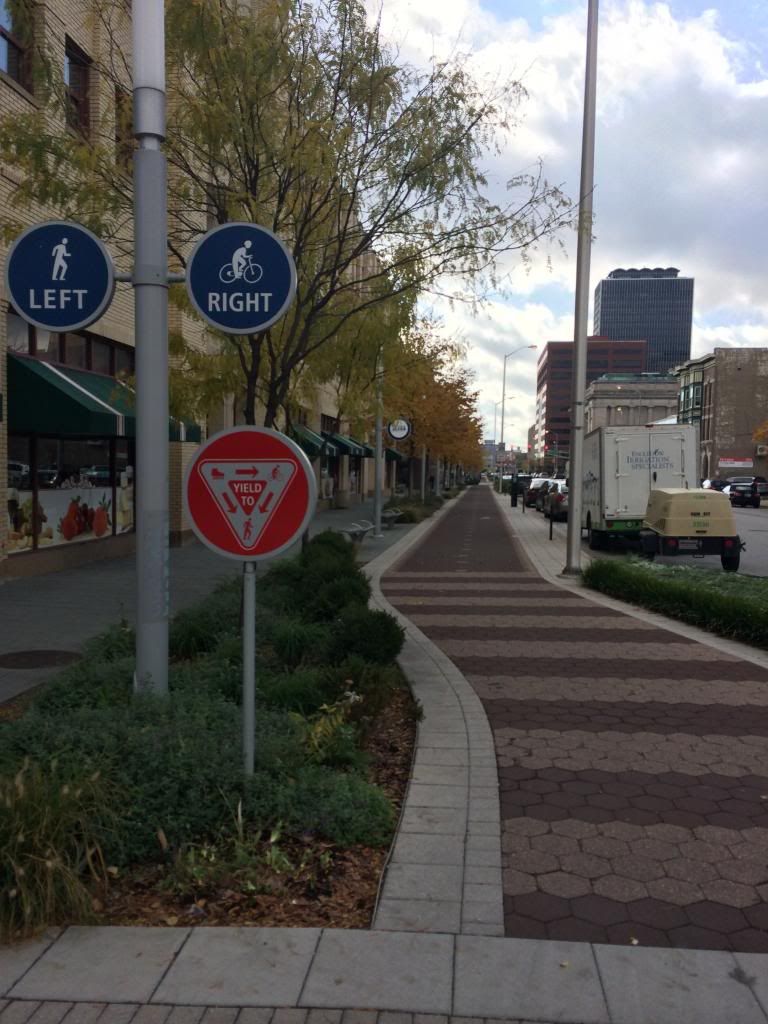
As I mentioned above, the wayfinding was very impressive. The heritage trail featured pretty much every form of signage you can think of. Particularly effective was the patterned, painted trail paving. It was simple and geometric, not competing with the cityscape. But it did clearly point the pedestrian in the right direction. A few streets also had inset street names in the paving, and there were of course historic markers everywhere.
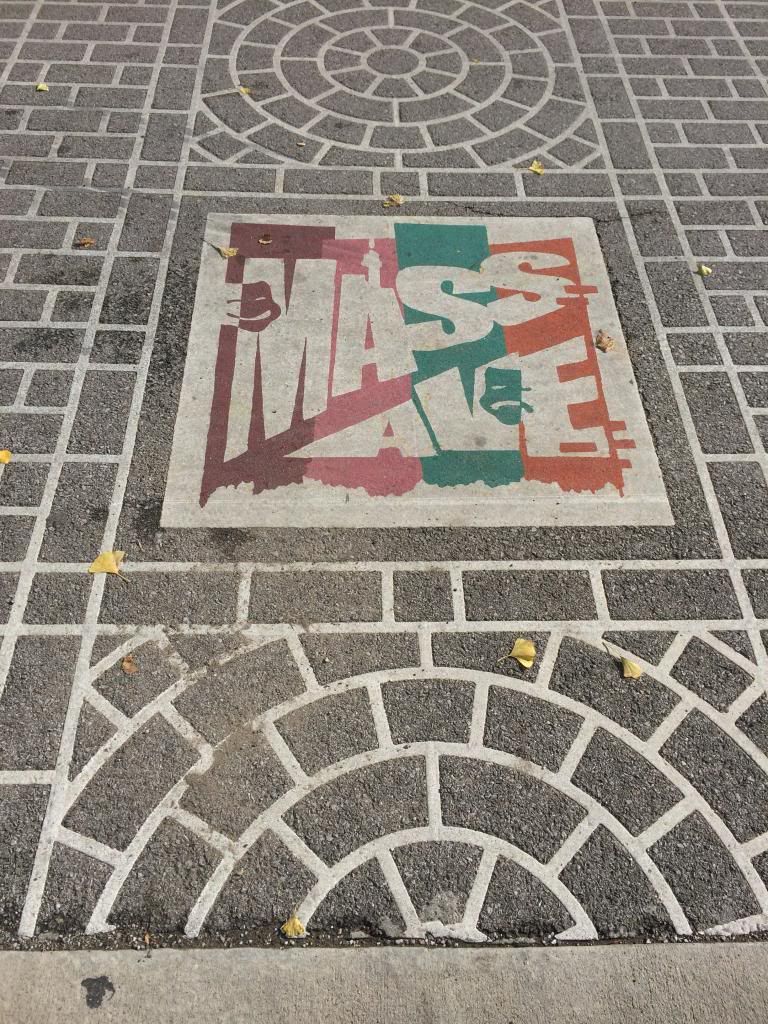
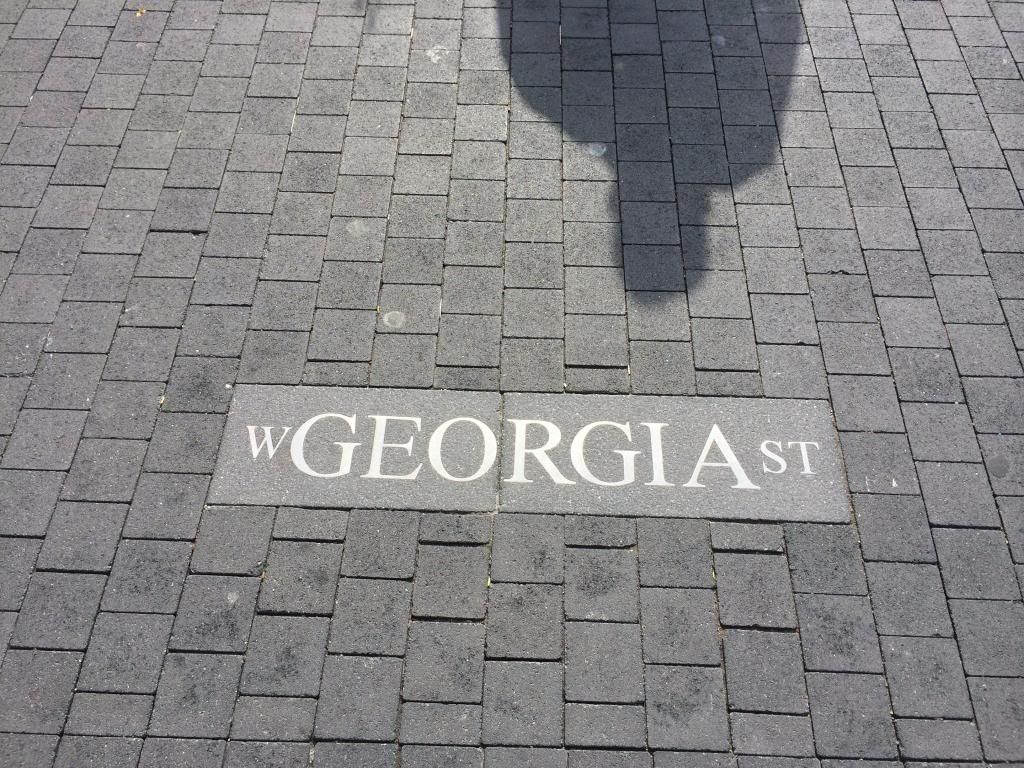
Lighting is often an afterthought in public spaces. Downtown Indy has really attractive and I’m guessing practical cantilevered lights. I’ve never seen anything quite like them. Proof that useful and pretty aren’t mutually exclusive.
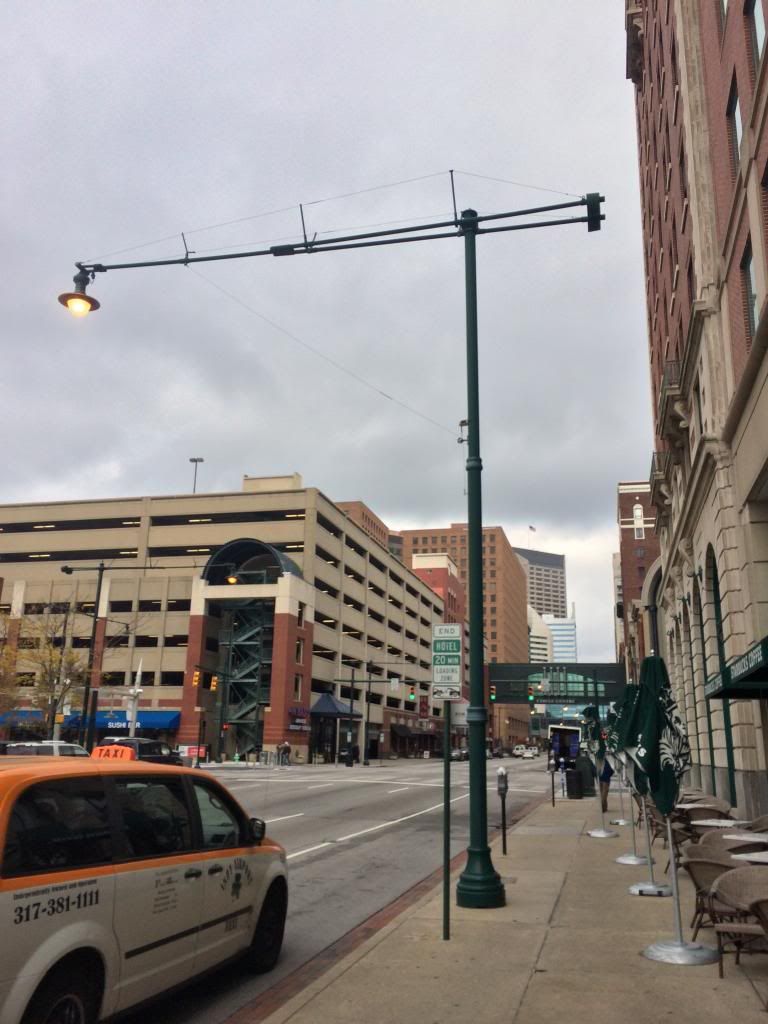 The Memorial Circle in Indy is both a pedestrian and auto space. Unlike other parts of the city, that clearly separate the modes, this area is much more like a woonerf. The brick paving is continuous, and there are only periodic oversized bollards and contrasting paving to mark the edge of the “car” and “pedestrian” spaces. Paired with the circular drive required around the monument, the space becomes pedestrian focused without preventing cars from moving through. Drivers naturally slowed down and payed closer attention because of the design of the street. While the complete streets approach is still more practical in many spaces, the shared space approach is a compelling alternative.
The Memorial Circle in Indy is both a pedestrian and auto space. Unlike other parts of the city, that clearly separate the modes, this area is much more like a woonerf. The brick paving is continuous, and there are only periodic oversized bollards and contrasting paving to mark the edge of the “car” and “pedestrian” spaces. Paired with the circular drive required around the monument, the space becomes pedestrian focused without preventing cars from moving through. Drivers naturally slowed down and payed closer attention because of the design of the street. While the complete streets approach is still more practical in many spaces, the shared space approach is a compelling alternative.
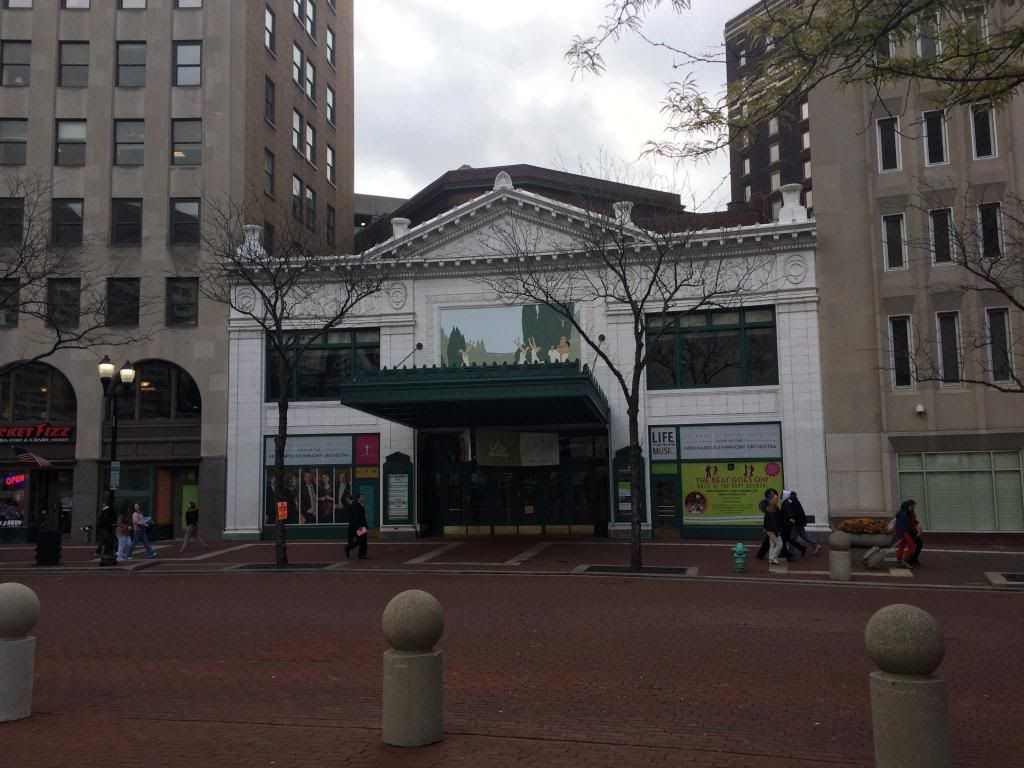
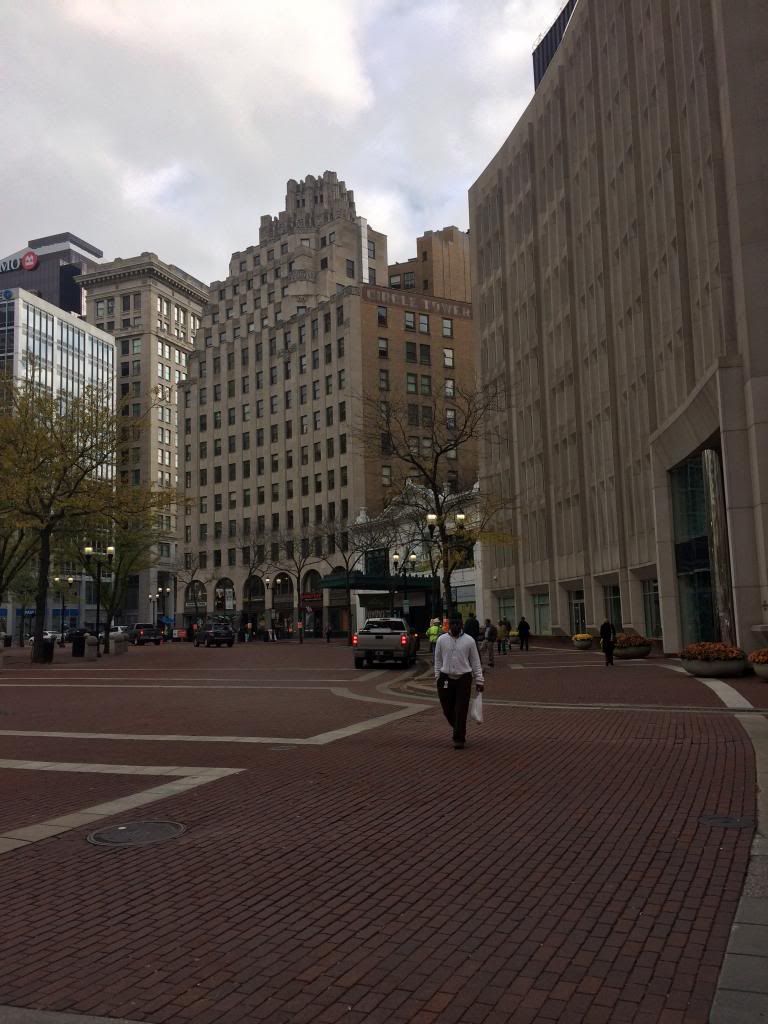
The murals! Philly and other cities are rightly famous for them. Turns out Indy has quite a few as well. Why these aren’t more common, I don’t know. Reality is that most cities have some blank walls caused by demolished buildings, parking garages, etc. Why not put in art instead of leaving it blank and ugly? Show some civic pride!
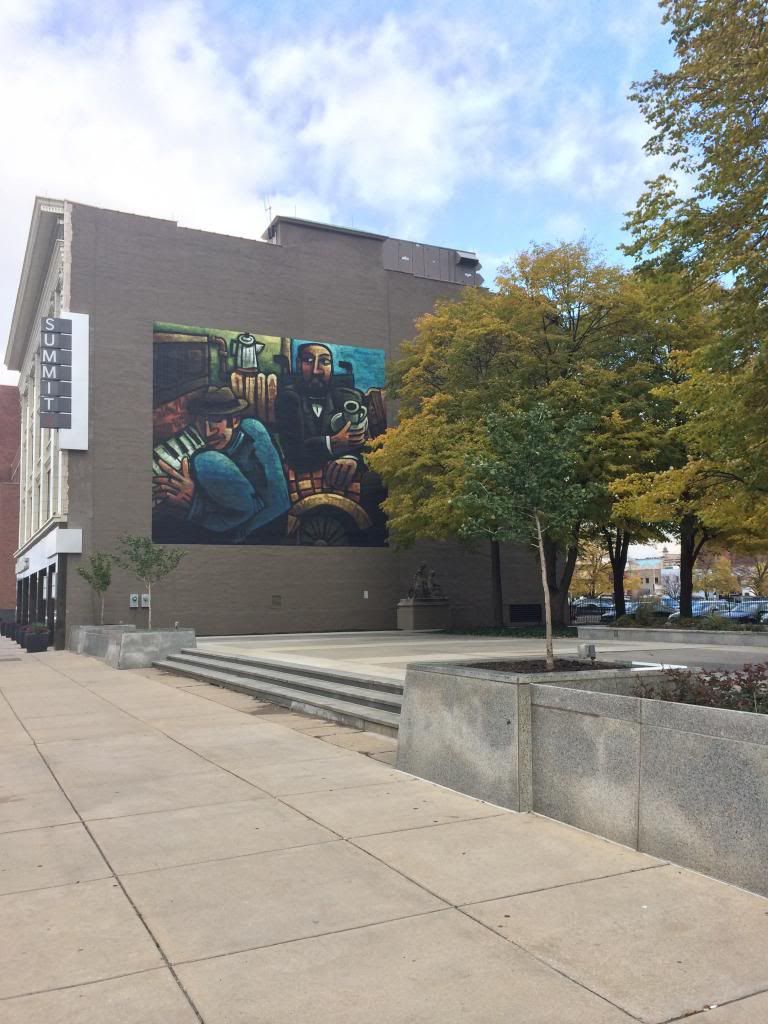
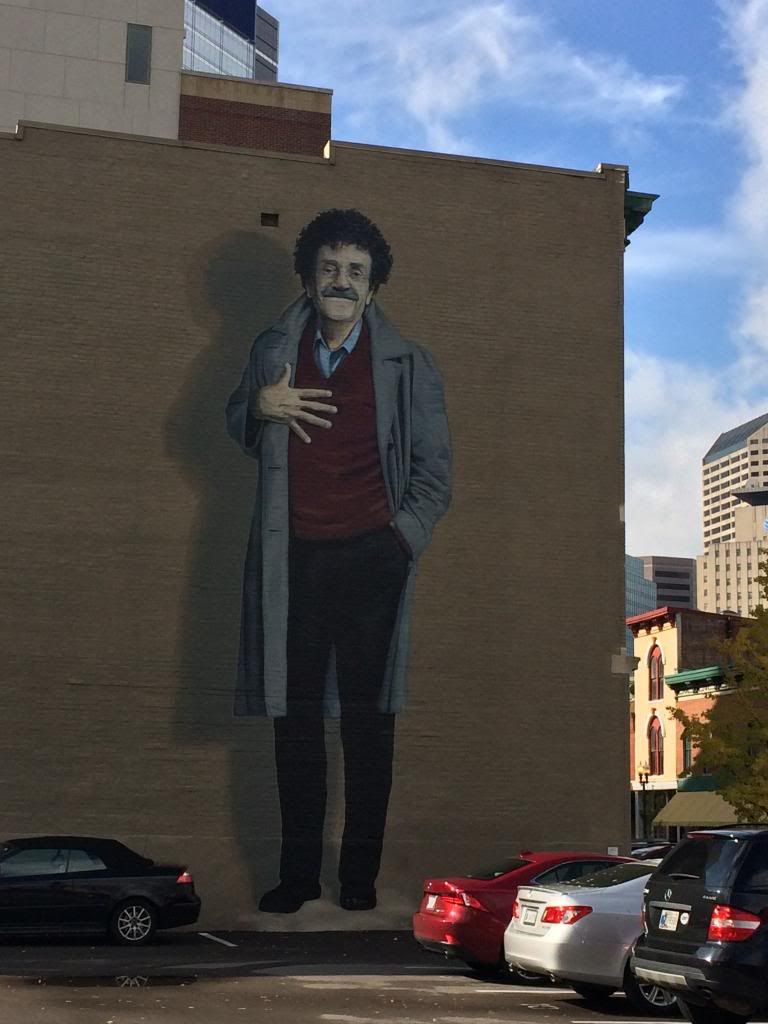
Bicycle-centric infrastructure. Of course, we have hills out here, so the cruisers and endless flat trails aren’t possible. [as an aside, I get really freaked out by how flat the Midwest is. I need hills, even if I embarrassingly have to walk by bike sometimes.] But lots of what Indy has should come standard. For instance, outside a huge parking garage, I saw a bike garage. Why don’t we have these at train stations and garages here? The color-coded bike lanes were also great.

I’ll gladly visit Indy again, which I can’t say for other cities I’ve been to. *cough* Tulsa *cough* But honestly much of what made Indy so pleasant isn’t that outrageous to ask for: some nice buildings, some infrastructure improvements to make walking and biking pleasant. Voilà! the hipster locavore restaurants will naturally follow.